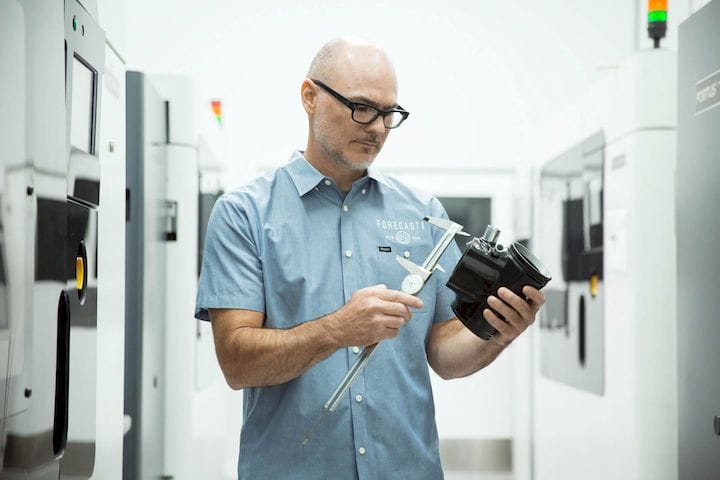![Yet another way for 3D print services to make money [Source: Forecast 3D]](https://fabbaloo.com/wp-content/uploads/2020/05/image-asset_img_5eb09c6d8f306.jpg)
During a discussion with Forecast 3D, we encountered a use case we hadn’t heard of previously.
Forecast 3D is a California-based custom manufacturing and 3D printing service that’s been around since 1994, quite a long time in this industry. It was launched by two brothers who literally started the business in their garage, like all classic business success stories.
They launched offering a combination of SLA-style 3D printing and urethane castings.
Today the company is vastly larger than its meagre beginnings. Forecast 3D now operates from no fewer than three separate facilities, and runs around 50 3D printers by their 150 staff. They tell us that among their fleet are 24 HP MJF 3D printers, one of the largest single installations of HP 3D printing gear in the world today.
Forecast 3D can produce varying quantities of parts for clients, ranging from small jobs of 4-400 units, up to an astonishing 10,000 parts per week for one of their premier clients.
![[Image: Fabbaloo]](https://fabbaloo.com/wp-content/uploads/2020/05/f3d_img_5eb09c6de5298.jpg)
Like most other service bureaus, they focus on the “low-volume production” model, where it is finically feasible to 3D print smaller quantities of parts rather than going to the expense of setting up tooling for mass manufacturing. That approach is only valid when huge quantities of parts can defray the considerable cost of tooling setup.
Its an approach used widely now, as product developers gradually come to understand the power of 3D printing, at least at the low-volume range. Low-volume production is now the heart of business for 3D print services today.
But in talking with Forecast 3D, we learned of another scenario that could become popular among companies offering 3D print services.
The scenario is this: a manufacturer has set up a traditional mass production line. They’ve spent those considerable funds setting up the tooling to allow, say, continuous injection molding of a new product to occur. They’re expecting to produce thousands of products each week for years.
This is a very typical situation, and would have nothing to do with 3D printing — if everything went well.
But what happens if it is discovered that there is a flaw in the design or tooling? It would be critical to make the fix and get it out to clients as soon as possible. The fewer flawed products in the market, the better, so speed is of the essence.
The problem is that to redesign and retool the manufacturing line, quite a bit of time can elapse. The result is that the production line is shut down while the retooling is done. That, or the manufacturer continues to knowingly produce and distribute flawed products, something that really should not be done.
The answer is in 3D printing technology: during the “shutdown” retooling period, it may be possible to substitute 3D printed versions of the redesigned product quickly — because 3D printing requires no retooling.
Yes, the 3D printed parts would be more expensive than the mass produced equivalents, but at least the manufacturing process can continue and clients continue to be served.
Eventually the retooled manufacturing line is put back into operation and things resume as normal. But for that period, downtime was transformed into uptime by 3D printing through a service.
The manufacturer does not need to purchase 3D printing equipment, software or skills; they need only contact a competent service provider who can likely do the work within a day or two.
That’s another great business case for 3D print services.
Via Forecast 3D











MakerOS has a brilliant hidden feature in their online service: a sophisticated 3D print pricing calculator that allows operators to determine exactly how to price prints.